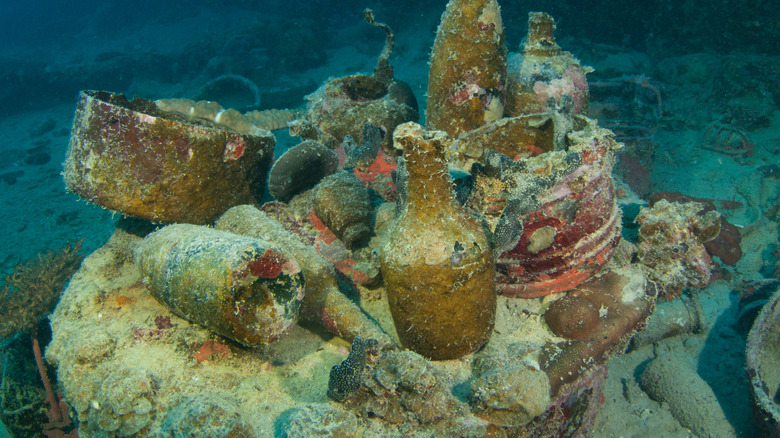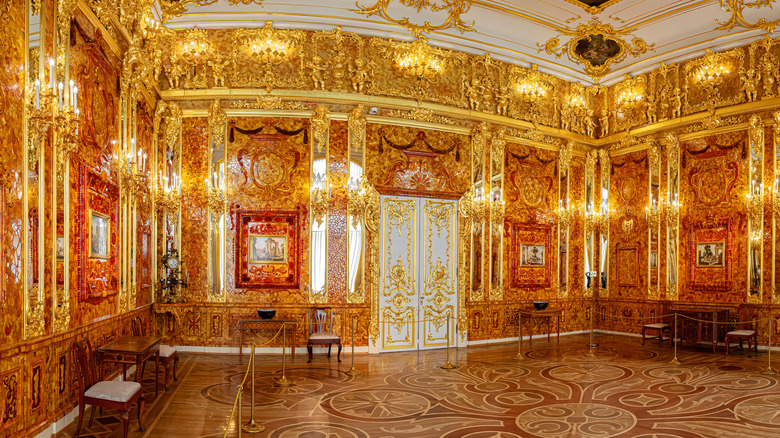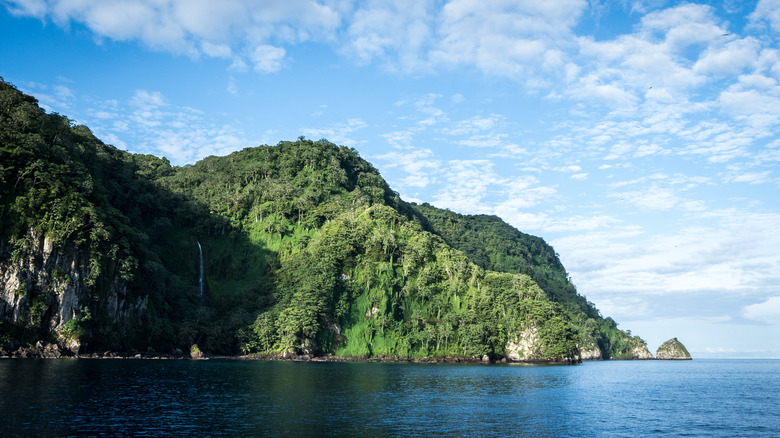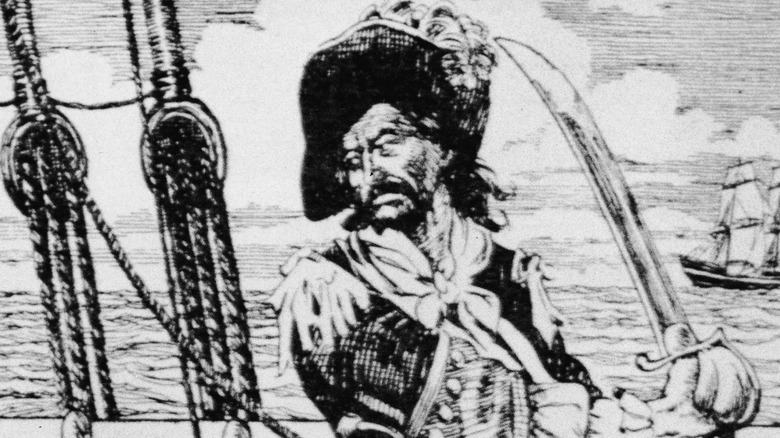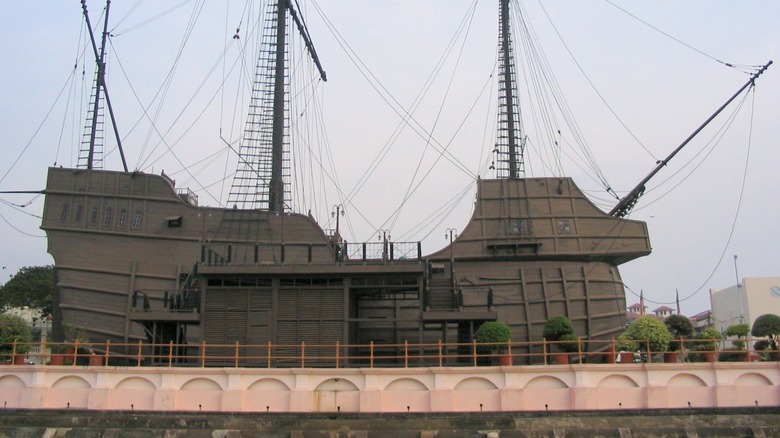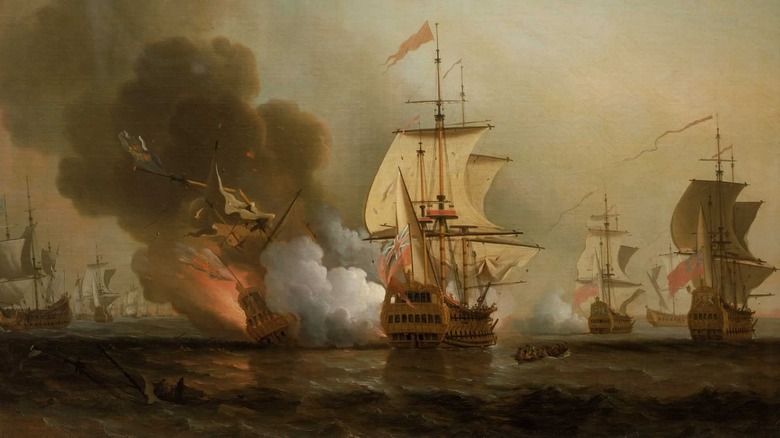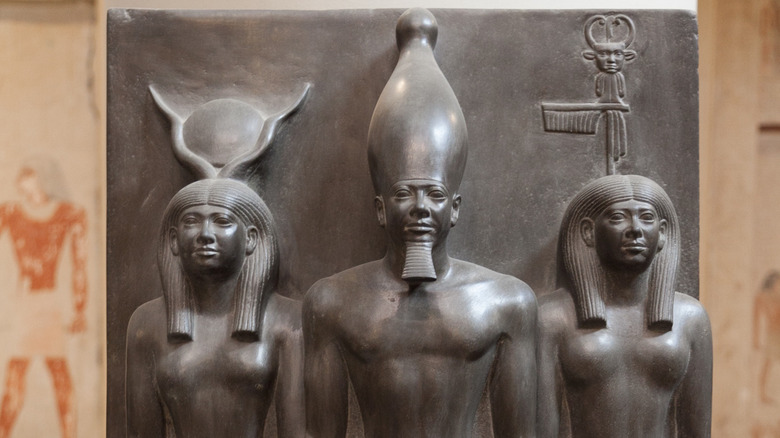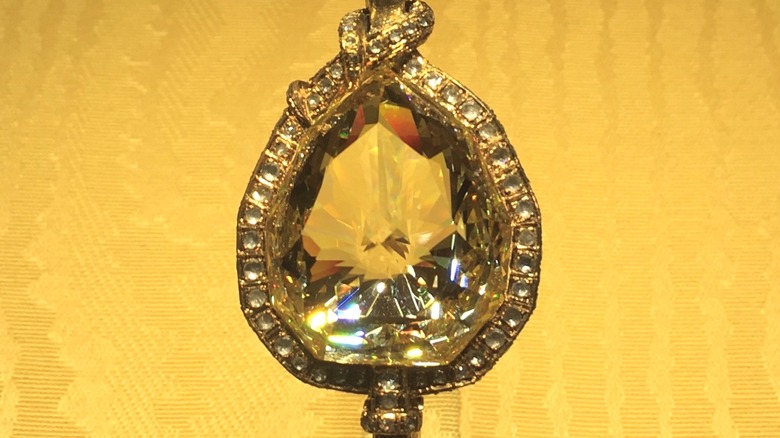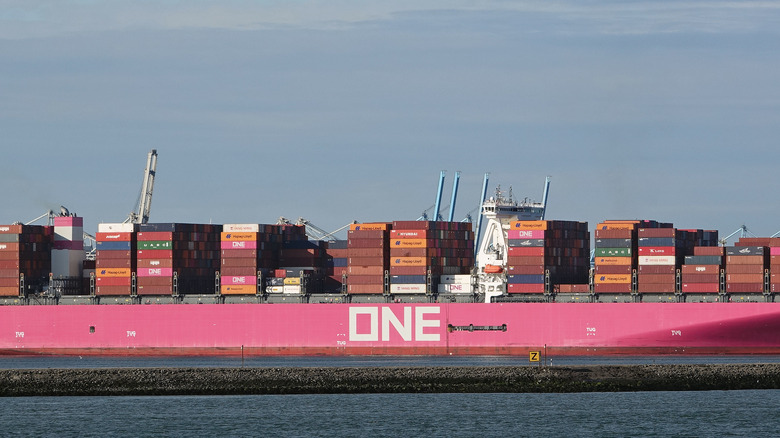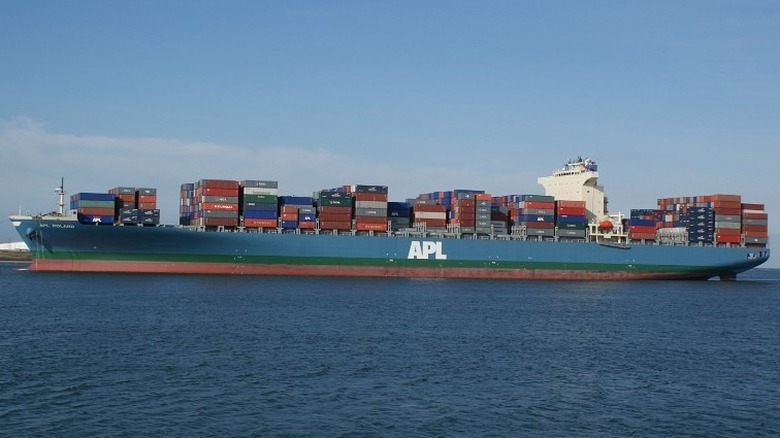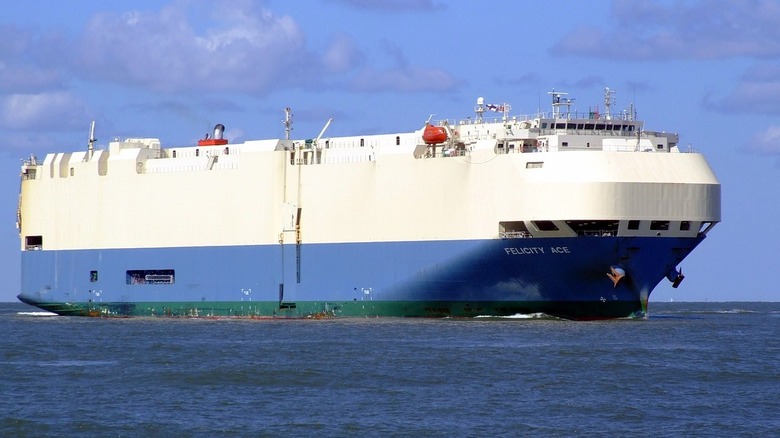The Most Expensive Pieces Of Cargo That Were Lost Forever
We may receive a commission on purchases made from links.
What's the most valuable piece of cargo that was lost forever, never to be found again? Some argue that it was a World War 2-era Nazi train full of several hundred tons of gold lost in the Czech Republic. While others point to shipwrecks that contained cargo worth several billion dollars in today's money.
Throughout history, various treasures and expensive trophies taken by the victor after wars or conquests were transported away from their homelands to distant regions. However, the valuables were often lost while being transported, either stolen or simply lost to natural disasters or human error.
We'll discuss the most popular ones in this article, though keep in mind that the list isn't exhaustive. This is because it's hard to ascertain the true value of some of these lost treasures, while others were never recorded in history. Still, we've included the estimated value of some of them. But keep in mind that their actual value may be different if or when they're actually found.
With that out of the way, let's begin.
The Amber Room
The iconic Amber Room was originally built by German architects back in the early 1700s in Charlottenburg Palace, where the first Prussian King, Frederick I, lived. Sky History reports, this was the first time someone had attempted to use Amber for interior decoration. The architects managed to build and finish it by 1716, and it was placed in Berlin City Palace. The Russian Tsar of the time, Peter the Great, visited the room and loved it, so the Prussian King Frederick William I gave it to the Tsar as a gift.
The room was then moved to St. Petersburg where it stayed until 1755 when the Tsar's daughter Elizabeth had its location changed to Catherine Palace. Since then, more architects worked on the room to expand it, and by 1770, it contained 6 tons of amber and covered an area of 590 square feet.
The room stayed in the Catherine Palace up until World War 2 when Hitler wanted the room to be taken back to Germany. He believed it was German property as it was originally built by German architects. The Nazis packed up the walls and panels in crates after capturing the room and had it shipped to Königsberg in Germany. The room was then reconstructed in the castle with the same name and remained there until 1944. Hitler had reportedly ordered the room to be moved, afraid that it would be destroyed by Allied forces. Subsequent bombings of the castle in 1944 destroyed most of the castle with historians unsure whether the room was taken out of the castle in time or if it was destroyed by the bombings.
The Soviet Republic reconstructed the room with the help of German experts. It cost $11 million and was completed in 2003 (pictured above). However, it's not as valuable or expertly crafted as the original room, which would be worth an estimated $140 million – $289 million today.
King John's Lost Treasure
The infamous King John of England was known as one of the greediest monarchs in the kingdom's history. Born in the late 12th century, he was known for imposing high taxes, part of what made him the villain of Robin Hood stories.
Without going into too much detail, the king's high taxes and exorbitant fines, annexing the barons' lands under his rule and his failed military campaigns made him infamous and hated. After losing his lands to the French King in the early 12th century, John was forced to return to Lynn, a city where he still had some power.
According to the British Library, the King's treasure was lost shortly after signing the Magna Carta, which limited the ruler's power in England subjecting it to the rule of law. After signing it, he immediately sought to get it annulled by the Pope, which led to the barons rioting against him, forcing him to flee Lynn and move to Lincolnshire. He reportedly had a large cache of valuables including the Crown Jewels that were traveling with him in a baggage train. The treasure was lost while crossing a bay in the eastern part of England called the Wash. The King made it out safely but the treasure was lost to the tides and was never found after that.
It contained the sword of Tristram (a knight from the Arthurian legend), a golden wand with a dove, the crown jewels, gold and silver cutlery, and more, with an estimated worth of $70 million.
Jewels of Lima
This is a big one. With an estimated value of around $1 billion, this treasure was stolen from Lima and was lost around Cocos Island, Costa Rica (pictured above).
Forbes reports that, back in 1820, when Lima was threatened by Jose de San Martin, an Argentine General, the Spanish viceroy decided to evacuate all the valuables until after the war against Peru. All of the expensive items were taken aboard the Mary Dear, a ship captained by William Thompson. The British captain sought to run away with the loot and took everything to Cocos Island in modern-day Costa Rica. However, he was chased by a Spanish warship and his crew was all caught and imprisoned. The captain agreed to help look for the treasure but escaped once they got to Cocos Island.
Expeditions to the island in the years afterward turned up with nothing.
The rumored treasure contained the following items: "Altar trimmings of gold cloth with canopies, monstrances, chalices all coated with gemstones of up to 1,244 pieces. 2 gold relic containers weighing 120 pounds with 624 topaz, carnelians, emeralds, and 12 diamonds. 3 relic containers of cast metal weighing 160 pounds with 860 rubies, 19 diamonds, and other gemstones. 4,000 doubloons of Spanish Marked 8, 124 swords, 5,000 crowns of Mexican Gold, 64 daggers, 120 shoulder belts, and 28 round shields. 8 caskets of cedar wood and silver with 3,840 cut stones, rings offering plates, and 4,265 uncut stones. 22 candelabra in gold and silver weighing 250 pounds and 164 rubies. One 7-foot Solid Gold Statue of the Virgin Mary with Baby Jesus. Weighing 780 pounds, rolled on her gold chasuble adorned with 1,684 jewels including 4-inch emeralds, 6-inch topazes, and 7 crosses made of diamonds."
Captain Kidd's Lost Treasure
Captain William Kidd is well known for his exploits in the golden age of piracy back in the late 17th century. Born in Scotland, Kidd was originally a privateer for the British Empire, tasked with dealing with pirates near the West Indies and North America. Established as a well-reputed captain in 1690, he was commissioned by the British to protect East India Company's ships against pirates around the Indian Ocean and the Red Sea.
According to the BBC, Captain Kidd turned to piracy around 1697 when he led a few unsuccessful attempts against coffee-bearing ships sailing from Yemen. His big break was the Quedagh Merchant, an Armenian ship carrying "satins, muslins, gold, and silver". Britannica reports that the ship was taken to Hispaniola Island and its whereabouts from there are unknown.
The pirate captain buried some of his treasure on Gardiner's Island, near Long Island, New York. This contained gold and other treasure worth around $1 million and was taken by Jonathon Gardiner and used as evidence to convict William Kidd of piracy. Most of his treasure was supposedly never found. A false find back in 2015 was rumored to be linked to his treasure, but the lone silver bar was all that was found. Some estimate that it was worth over $160 million in today's money, but without concrete evidence, it's hard to say what it was actually worth.
The Gold Train of Walbrzych
Unlike some of the other lost treasures, this train is closer to a myth than being real. The end of world war 2 spawned numerous stories and legends, with the lost Nazi train of Walbrzych being one of them. Just like the amber room this one was also, unfortunately, lost with no evidence of its exact location or contents ever found. However, it was rumored to contain 300 tons of gold along with weapons, jewels, and art pieces.
The story goes that the Nazis loaded up a train with gold and art, intending to get it out of Germany. It left Breslau, getting to the Freiberg station in Schlesien. From there it was supposed to get to the modern-day Walbrzych in Poland but it never got there. Search attempts by the Polish army and subsequent treasure hunters all ended in vain with numerous digs around the suspected site coming up with nothing. This has led many to suspect that it may just be an urban legend and never existed.
Nevertheless, if you calculate its value based on 300 tons of gold alone, it'll be worth well over $19 billion today (assuming a $65 million/ton price for gold).
Flor De La Mar
Translating to "Flower of the Sea", the Flor De La Mar was a large 400-ton ship that sank with valuables near the Indonesian Island of Sumatra. Built as a flagship vessel by the Portuguese in the early 16th century, Flor De La Mar was mainly used for colonizing efforts in East Asia.
The 118-foot-long ship roamed the seas for 9 years, eventually being put under the command of Afonso de Albuquerque. Afonso was a statesman, and general, who lead the Portuguese to conquer Malacca and Goa. Flor De La Mar had seen numerous repairs over its 9 years of service and was said to be "barely seaworthy" before its fateful last journey.
After taking over Malacca, Afonso had the ship loaded up with riches. However, it met its demise near Sumatra, where the ship reportedly sank and its cargo was never found. Some say that the locals stole most of the treasure while others claim that Afonso ran away with the plunder after sinking the ship himself. However, with no evidence to back them up, these theories haven't been proven correct.
According to Discovery, the ship was rumored to contain "80 tons of gold, 200 chests filled with diamonds, rubies, emeralds, coins, and jewels, four full-sized sitting lions made of solid gold and filled with the finest perfumes and a jewel-encrusted table of the Queen of Malacca. In addition, it contained the gold bracelet of the Rajah of Sabandar and rare, hand-drawn maps by Javanese artists showing sea routes to China and other regions." This would be worth about $3 billion today.
[Featured image by Felix Andrews via Wikimedia Commons | Cropped and Scaled | CC-BY-SA-3.0-migrated]
San Jose Shipwreck
Spain's San Jose galleon carried another shipwrecked treasure of the Colombian coast. But, what makes this one unique is that the treasure has actually been found and is well documented by the authorities.
The cargo was lost during the War of the Spanish Succession back in the early 18th century. The galleon was sunk by the British in 1708 and carried almost 200 tons of valuables taken from South American colonies.
The San Jose was discovered in 1989 near Cartagena, Colombia, but its exact contents and location weren't shared until recently. Iván Duque, President of Columbia, shared a video of the wreck recorded by the country's army. This allowed experts to ascertain the true extent of valuables and other cargo aboard the San Jose. The ship carried 64 guns, and 600 men along with gold, silver, ceramics, swords, and more, which is estimated to be worth $17 billion.
If true, this could make it one of the most valuable shipwrecks in the world, at least among those that have been found.
Both the Spanish government and Colombia have laid claim to San Jose. Spain argues that the ship was originally Spanish, hence it belongs to them while Colombia says that anything discovered on their soil is theirs by right.
[Featured image via Wikimedia Commons | Cropped and Scaled]
Sarcophagus of Menkaura
Continuing our list of lost cargo ships is Beatrice, an English vessel that was carrying the 4th dynasty pharaoh's sarcophagus. Menkaura's sarcophagus was being taken to the British Museum from Malta, but the ship never arrived and its cargo was never found. This particular pharaoh is notable as he built the 3rd great pyramid at Giza.
The sarcophagus was originally discovered by Richard Vyse back in the 19th century. In his book "Operations Carried on at the Pyramids of Gizeh in 1837", he claimed, "The stone sarcophagus was eight feet long and three feet one inch wide. Its height was two feet eleven inches. The inside dimensions were six feet five inches long, two feet and one half an inch wide, and two feet and one half inch deep. Its estimated weight was nearly three tons."
After loading the sarcophagus on the Beatrice, the ship set to sail towards Great Britain when it was met with a violent storm on the 13th of October 1838. The vessel capsized, however, most of the crew was saved successfully. Unfortunately, the ship's cargo was lost and wasn't found again.
It's hard to ascertain the value of the ill-fated sarcophagus, but it's definitely priceless for historians and Egyptologists.
[Featured image via Wikimedia Commons | Cropped and Scaled]
Florentine Diamond
This yellowish diamond is subject to much controversy and debate. Antique Jewelry University reports the diamond was first seen in mid-17th-century, Tuscany in Italy. At the time it was in the possession of the Great Duke of Tuscany. In its original form, it weighed in at 137.27 carats with a Mountain Dew-like color. The jewel eventually made its way into Austria, after being lost in a war. The jewels were given to the Austrian emperor as part of a political marriage between the French and Austrian nobility. Its last documented location was in the Austrian Crown Jewels until the end of World War 1 in 1918.
It's hard to pinpoint the exact details about its current location, which is why we'll briefly mention some of the most popular theories.
Once the Austrian royal family escaped to Switzerland, the diamond vanished from history as some claim they lost it during their escape. Some accounts point to Hitler stealing the diamond during World War 2 while others claim that American soldiers took it back to Vienna where it belonged. Another popular theory claims that it made was sold off and then recut into a diamond known as the Shah of Persia. However, none of these theories have been proven so your guess is as good as ours as to where the diamond went.
[Featured image by Manuelarosi via Wikimedia Commons | Cropped and Scaled| CC-BY-SA-4.0]
ONE Apus
Coming back to the present times for a moment, this one incident deserves a mention. The ONE Apus container ship lost 1,816 containers during transport, causing massive losses to everyone involved.
The vessel roughly had enough capacity to hold 14,000 20-foot containers onboard. ONE Apus was bound for Long Beach, California after setting sail from Yantian, China. It met with disaster due to extreme weather conditions in the Pacific Ocean, about 1,600 nautical miles away from Hawaii. Reuters reports that, according to the statement issued by the companies involved, "It is estimated that the number of lost or damaged units could exceed 1,900, of which some 40 are believed to be dangerous goods containers." The ship later docked at Kobe, Japan, and offloaded nearly 1,000 damaged containers, which added to the overall losses on top of the nearly 2,000 containers lost at sea.
It was managed by the NYK Shipmanagement of Japan and owned by Chidori Ship Holdings. Overall it suffered losses estimated at $90 million, aside from insurance losses which were estimated at $200 million.
[Featured image by kees torn via Wikimedia Commons | Cropped and Scaled| CC-BY-SA-2.0]
MOL Comfort
Going a level above the ONE Apus, MOL Comfort's shipwreck not only cost the insurance companies a lot more, but it was also arguably the largest loss of cargo containers during transport.
Built-in 2008 by Mitsubishi Heavy Industries with 12 other similarly designed vessels, it was originally called the APL Russia. After being sold to Mitsui O.S.K. Lines in 2012, it was renamed MOL Comfort. As for the shipwreck, the saga started on 17 June 2013 after it developed a crack in the middle of the ship about 230 miles from Yemen. This was reportedly due to bad weather, which also caused the next string of disasters aboard the MOL Comfort.
The ship eventually broke into two and later caught fire, which burned 2,400 containers, with the remaining containers sinking with the vessel. In total, the MOL Comfort went down with 4,293 containers, costing insurance firms somewhere around $400 million.
After the incident, the other container ships designed similarly to the MOL Comfort were withdrawn and their hulls were upgraded as a precaution against a possible design flaw. The way the vessels were operated was also changed to ensure less stress on the hull.
[Featured image by Roy van Wijk via Wikimedia Commons | Cropped and Scaled| CC-BY-SA-2.0]
Felicity Ace
Then, there's the recent Felicity Ace incident which occurred in February and March 2022. A container ship carrying luxury cars from Germany to the United States met with disaster near the Azores Archipelago, Portugal. It reportedly caught fire, with the crew sending a distress signal for evacuation. After they were successfully rescued, the Felicity Ace continued to burn for a while and was left on its own, adrift at sea.
A salvage team was eventually sent by the Portuguese navy to save the ship by towing it to safety but it didn't work out and the vessel eventually sunk after developing a list on starboard.
According to a report by Carscoops, the ship contained 3,828 vehicles most of them from the Volkswagen Group, including VW, Porsche, Bentley, Lamborghini, and Audi. Among them were 15 Lamborghini Aventador LP 780-4 Ultimae, several Volkswagen ID.4 and Audi e-Tron, as well as some unique cars like a 1996 Honda Prelude SiR, a 1977 Land Rover Santana, a 2019 Mini Countryman, and more.
According to two different analyst firms, the total loss is somewhere between $300 million to $400 million.
[Featured image by Alf van Beem via Wikimedia Commons | Cropped and Scaled| CC0-1.0]
